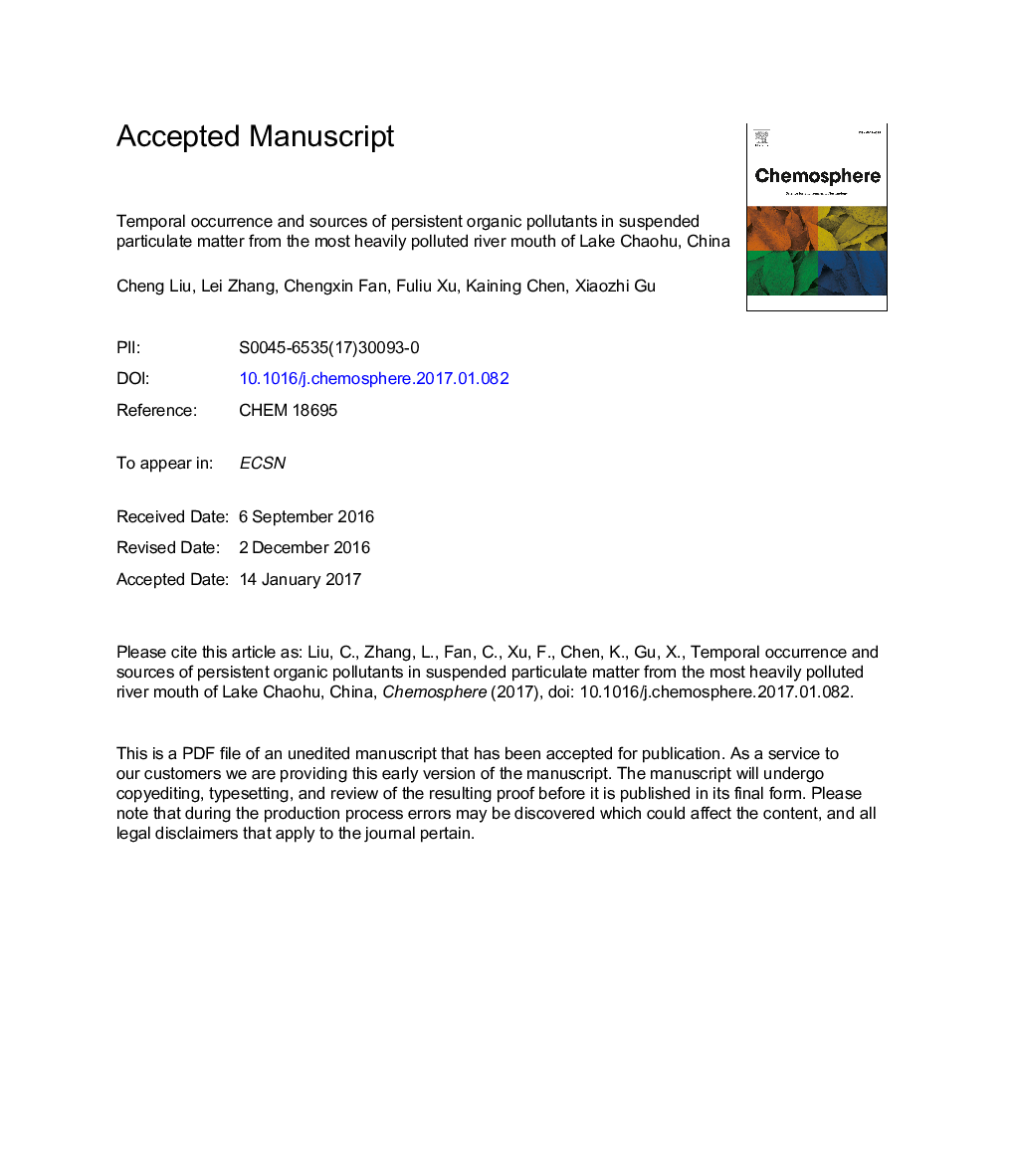| کد مقاله | کد نشریه | سال انتشار | مقاله انگلیسی | نسخه تمام متن |
|---|---|---|---|---|
| 5747285 | 1618797 | 2017 | 34 صفحه PDF | دانلود رایگان |
عنوان انگلیسی مقاله ISI
Temporal occurrence and sources of persistent organic pollutants in suspended particulate matter from the most heavily polluted river mouth of Lake Chaohu, China
ترجمه فارسی عنوان
وقوع زمانی و منابع آلاینده های آلی ماندگار در ذرات معلق در معرض خطر از دهنه رودخانه چائوو، چین
دانلود مقاله + سفارش ترجمه
دانلود مقاله ISI انگلیسی
رایگان برای ایرانیان
کلمات کلیدی
موضوعات مرتبط
علوم زیستی و بیوفناوری
علوم محیط زیست
شیمی زیست محیطی
چکیده انگلیسی
The Nanfei River is by many measures the most heavily polluted tributary to Lake Chaohu. In this study, the temporal occurrence and sources of four classes of persistent organic pollutants (POPs), including polycyclic aromatic hydrocarbons (PAHs), organochlorine pesticides (OCPs), polybrominated diphenyl ethers (PBDEs), and polychlorinated biphenyls (PCBs), in suspended particulate matter (SPM) from the river mouth were investigated monthly during 2014. Results show that concentrations of all four POPs in SPM were higher than those in the sediment of Lake Chaohu. PBDEs (26.7 ng gâ1 dry weight (dw)) were originated mainly from commercial deca-BDE mixtures. PCB concentrations (1.336 ng gâ1 dw) were lower than those of sediments in many other water bodies worldwide. PAHs (2597 ng gâ1 dw) and OCPs (57.38 ng gâ1 dw) were the most common POPs. PAHs mainly had high molecular weights and originated from pyrolytic sources, with a small proportion of petrogenic origin. The predominant OCPs were DDTs, heptachlorepoxides, dieldrin, hexachlorocyclohexanes, hexachlorobenzene, and chlordanes. Most OCPs originated from historical use, except lindane. Generally, of all the POPs studied, those of primary ecological concern should be acenaphthene, fluorene, DDTs, and chlordanes. Higher concentrations of POPs were detected during winter and spring than in summer and autumn, probably because of the high river flow during the rainy season. The high concentration of POPs in the riverine SPM and the fractionation of POPs in the water and SPM of the river should be a focal point in the future study of Lake Chaohu.
ناشر
Database: Elsevier - ScienceDirect (ساینس دایرکت)
Journal: Chemosphere - Volume 174, May 2017, Pages 39-45
Journal: Chemosphere - Volume 174, May 2017, Pages 39-45
نویسندگان
Cheng Liu, Lei Zhang, Chengxin Fan, Fuliu Xu, Kaining Chen, Xiaozhi Gu,
